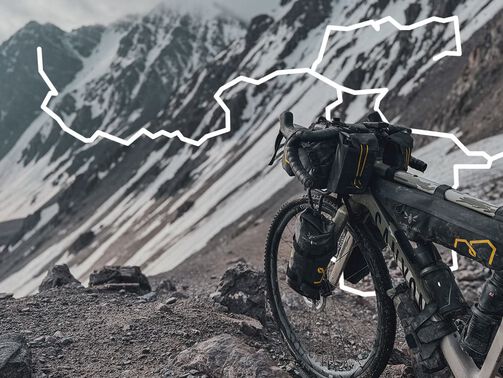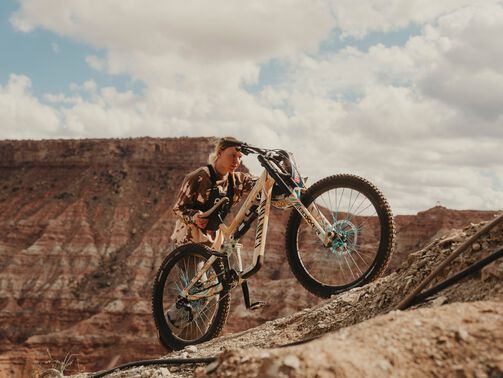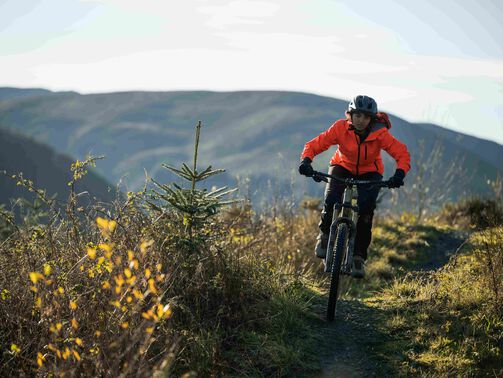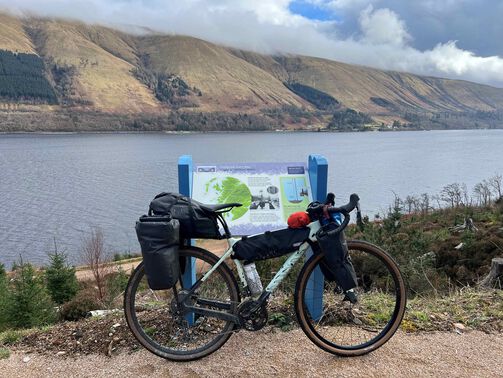Set up your gravel bike for any terrain: Get the perfect fit and feel for every ride
Want to get your gravel bike setup totally dialed in? From tyres and gearing to bar position and bag mounts, this guide gives you everything you need to set up your gravel bike for any terrain.
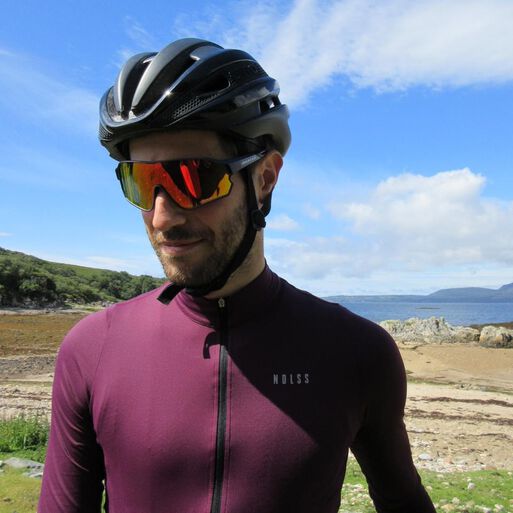
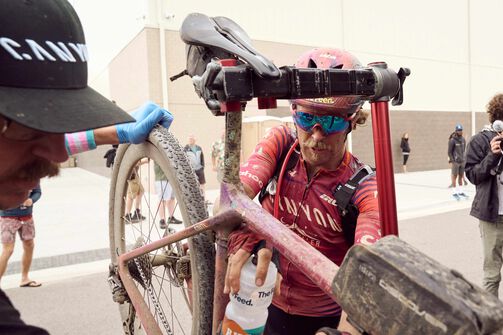
Getting your gravel bike setup right is vital if you want to ride further, faster, and more comfortably. Whether you’re exploring local trails, taking on a bikepacking adventure, or racing over mixed terrain, this guide walks you through how to set up a gravel bike for optimal performance and fit.
If you're still deciding which gravel bike is best for you, check out our gravel bike buyer’s guide to explore the full range and find the perfect model for your riding goals.
Contents
Why gravel bike setup matters
Gravel riding combines road efficiency with off-road challenges, and your setup needs to reflect that mix. A proper gravel bike fit, and component selection will improve your riding efficiency and reduce fatigue, while enhancing comfort and stability across terrain types. Being comfortable on your gravel bike also helps prevent injuries over longer rides and maximises bike control on technical surfaces. Understanding gravel bike geometry will help you achieve a comfortable fit. Our gravel bike geometry guide explains all.
Whether you're adjusting your position on the bike or changing up your tyre selection, small changes often make a big difference in how your bike handles. Nail your gravel bike setup, and you’ll stay confident, safe, and in control, no matter the trail ahead.
Grail vs. Grizl: Which Canyon gravel bike suits your ride?
At Canyon, we offer two different gravel platforms:
- Grail: Best for speed and performance-focused riders. It has a lightweight carbon frame, aerodynamic tube shapes, and a one-piece cockpit.
- Grizl: Built for rugged exploration and bikepacking, but no slouch when it comes to speed and efficiency. Longer reach, extra mounting points and more tyre clearance make it ideal for loaded rides and technical trails.
In essence, the Grail is best suited to fast riding and racing, speeding along smoother gravel and handling itself well on tarmac. Conversely, the Grizl offers even greater ruggedness and stability, making it perfect for chunkier and more technical gravel, bikepacking and multi-day rides. However, both bikes are fast, both bikes are comfortable, and neither bike will let you down on most gravel rides.
When deciding between models, you may also want to consider frame material. Both aluminium and carbon have distinct advantages depending on your needs, budget, and priorities - our aluminium vs. carbon gravel bike guide breaks it all down.
If you’re still usure which model is right for you, our Grail/Grizl guide should help you out.
How to choose the right gearing for your gravel bike
Your choice of gearing affects how you climb, ride on the flats, and handle steep technical descents. For steep or off-road climbs, choosing a wide-ranging cassette like an 11–42T or 10–50T will keep you spinning and planted. Unlike riding on tarmac, it is generally better to stay seated on steep off-road climbs to retain traction on loose surfaces. It is also worth factoring in your fitness level, and whether you prefer to spin a smaller gear or push a larger one.
There is also the choice between a 1x or 2x drivetrain.
- A 1x drivetrain (a single front chainring) is usually simpler, lighter, less likely to get mud and debris stuck in the chainrings, and better at chain retention. This makes it ideal for rugged riding over rougher terrain.
- On the other hand, a 2x drivetrain (two chainrings) offers tighter gear jumps and a wider range for varied surfaces, making it ideal for gravel rides that take in road and off-road sections.
A perfect example of a Canyon gravel bike, equipped with gearing designed for racing is the Grail CF SLX 8 Di2, which has 2x chainrings and a tighter 11/34 cassette. This drivetrain setup is ideal for faster riding and offers smaller jumps between gears.
Alternatively, the new Grizl CF 7 Escape features ‘mullet’ gearing — a smaller 1x single chainring setup with an enormous 11/51 cassette — making it the ideal bike for epic rides and steep, off-road climbs, even when fully loaded with luggage.
If you still need help deciding on components, our gravel groupsets guide explains the pros and cons in more detail.
What’s the best wheel size for gravel riding: 650b or 700c?
Both 650b and 700c wheels offer different benefits for gravel riding, depending on your priorities.
700c wheels are generally best for higher speeds and mixed terrain. They suit tyre widths between 35-45mm and roll faster and more efficiently on smoother gravel. 650b wheels are usually optimal on technical trails and for increasing overall comfort. They are suited for 47-53mm tyres and offer more grip and better compliance on rough terrain.
650b wheels are stocked on XS and 2XS Grizl CF SL 8 1x and CF SLX 8 Di2 models. They also appear on XXS and XS Grail CF SL/CF SLX models.
Choosing the right gravel tyres: Width, tread and pressure
When it comes to comfort, grip, and performance, tyre choice is vital.
35–40mm tyres are good for hardpack and mixed surfaces, while opting for 45–53mm rubber will be better on rocky, muddy, or rooty trails. Slick/low tread tyres are optimised for fast-rolling on dry, compact gravel, while a knobbier tread delivers more grip on loose or wet terrain. Finally, a mixed tread with a semi-slick centre and side knobs provides speed and cornering grip.
Tyre pressure is also key. Lower pressures deliver more grip and comfort (ideal off-road), higher pressure offers better speed on smooth terrain.
Grail models offer 42mm tyre clearance and are stocked with 42mm rubber, ideal for faster riding and slightly smoother surfaces. You can run these tyres at slightly higher pressures compared to wider tyres.
The Grizl has space for 50mm tyres, and is generally equipped with 45mm rubber, the sweet spot for riding on mixed surfaces and more technical gravel. You can run these at lower pressures to make the most of their wider contact patch and their ability to soak up bumps and trail debris.
Find more tyre tips in our gravel tyre pressure article and best gravel tyres list.

Handlebar and cockpit setup tips for control and comfort
Your cockpit or handlebars are one of the main contact points on the bike. Ensuring you have the correct handlebar width and stem length can determine how your bike feels on long rides. Don’t overlook it.
As a rule of thumb, the handlebar width should match your shoulder width. Wider bars are often specced on gravel bikes because they add control on descents, while flared drops offer even better control on rough trails. Many gravel bikes, such as the Canyon Grizl, come equipped with a shorter stem for quicker handling, and also to reduce the reach given the longer top tube. Choosing a thicker handlebar tape or one that is cushioned or gel-backed will also give you better shock absorption. You’ll be thankful for these comfort tips at the end of a long off-road ride.
The Grail, while still very comfortable, comes equipped with a slightly narrower one-piece carbon handlebar, offering greater aerodynamics, making it ideal for racing and faster off-road riding.
Optimising your gravel bike for bikepacking, racing or exploring
Your gravel bike can do it all - if it’s properly equipped.
Bikepacking setup
A bikepacking setup will differ from a racing setup. Low weight will be less of a priority, while comfort combined with versatility will be key.
Opting for wide, durable, tubeless-ready tyres is advisable. Anything over 45mm, run at lower pressures, will provide the comfort and puncture protection you need for epic rides, long distances, and tough terrain. A frame, like the Canyon Grizl, contains a number of mounting points for frame bags, top tube bags, saddle bags, and fork storage. Low gearing, hydraulic disc brakes, and wide flared handlebars will provide all the comfort you need to take on tough terrain, steep climbs, and adverse weather.
Racing setup
For racing, low weight and aerodynamics are more important. Extra mounting points and racks are less vital as you seek to shed weight for maximum speed over shorter distances. Opting for a 35-40mm tyre with a slick centre tread and pronounced outer tread will provide the ideal combination of fast-rolling speed and grip. A racing-oriented gravel bike frame like the Canyon Grail features a more aggressive position and gearing better suited to higher speeds.
Day-rides or all-road
For all-day rides and all-road adventures, an endurance-oriented setup – like the one on our Endurace – is highly recommended. You should choose a comfortable saddle that you can happily spend countless hours on, and a cockpit with stem and handlebar dimensions suited to your needs. Tyres between 30-40mm offer the ideal combination of balance, grip and speed. Additionally, bottle cages to ensure you carry enough fluids to remain hydrated, a GPS mount to attach a bike computer to assist with mapping and ride data, and fenders to offer protection in adverse weather conditions are all considerations for epic rides.
Final checklist: Set up your Canyon gravel bike right
It’s essential to match your bike setup to your riding style and terrain. Whether you choose the performance-focused Canyon Grail for speed and efficiency, or the more rugged, versatile Grizl for bikepacking and technical trails, both bikes excel when properly fitted and equipped. From gearing to handlebar fit and tyre pressures, every adjustment contributes to comfort, control, and confidence on mixed surfaces. By fine-tuning your bike setup to suit your goals- be it racing, exploring, or day-long adventures- you’ll ensure every ride is comfortable, fast, and more enjoyable.
Before you hit the trails, run through this checklist:
- Frame type suits your terrain (Grail vs. Grizl)
- Gearing fits your fitness and route
- Wheels and tyres choices for grip, speed, and comfort
- Tyre pressure is adjusted to surface type
- Handlebars and stem are sized for comfort and control
Now it’s time to get out riding on your dream Canyon gravel bike. We hope you enjoy every new adventure!
Discover our Gravel Bikes
Did this article help?
Thank you for your feedback
-
 About the author
About the authorCharles Graham-Dixon
Charlie is a copywriter, journalist, and passionate road and gravel rider, currently splitting his time between Madrid and London. With a deep love for cycling culture, Charlie brings words to life for brands and publications alike




